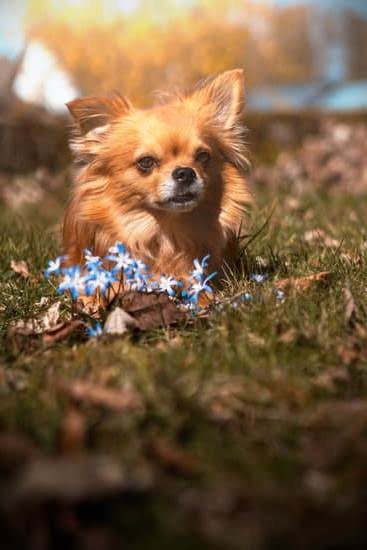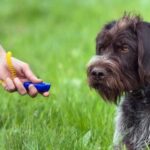Are you wondering how to train your dog to hunt squirrels? Hunting is a natural instinct for many dog breeds, and with the right training, you can develop your furry friend’s skills for a successful squirrel hunt.
In this guide, we will explore the process of training your dog to hunt squirrels, from assessing their ability and temperament to introducing them to the scent of squirrels and utilizing command signals for hunting. By understanding your dog’s instincts and implementing the right techniques, you can enjoy the thrill of squirrel hunting with your canine companion.
To start, understanding your dog’s natural instinct to hunt is crucial in training them for squirrel hunting. Dogs have been bred for centuries to assist humans in hunting small game, making them well-suited for this activity. By tapping into their innate drive to chase and capture prey, you can guide them towards becoming skilled squirrel hunters. With the right approach and patience, you can effectively channel their instincts into a rewarding and fulfilling experience.
Assessing your dog’s ability and temperament is an important step in determining whether they are suitable candidates for squirrel hunting. Not all dogs have the same level of prey drive or agility, so it’s essential to evaluate their physical capabilities and behavioral traits. By recognizing their strengths and limitations, you can tailor your training approach to suit their individual needs, ensuring a positive and successful hunting experience.
Assessing Your Dog’s Ability and Temperament
Here are some factors to consider when assessing your dog’s ability and temperament:
- Breed: Some breeds are naturally inclined to be great hunters, such as terriers, hounds, and retrievers. Consider your dog’s breed and its hunting instincts.
- Energy level: Hunting squirrels requires a lot of energy and endurance. Assess whether your dog has the stamina for this activity.
- Prey drive: A strong prey drive is essential for squirrel hunting. Observe if your dog shows interest in small animals or exhibits a hunting instinct during playtime.
Once you have assessed your dog’s ability and temperament, you can determine whether it is suitable for squirrel hunting. If your dog possesses the necessary traits, then you can proceed with training it to hunt squirrels using appropriate techniques and methods.
In addition, consider consulting with a professional trainer or joining a hunting club to get expert advice on how to train your specific breed of dog to hunt squirrels effectively. Remember that patience and consistency are key when training your dog for this purpose.
Basic Training Techniques for Squirrel Hunting
The key to training your dog to hunt squirrels lies in understanding and harnessing their natural instincts. Dogs have a strong prey drive, and many breeds have been specifically bred for hunting small game like squirrels. Basic training techniques focus on tapping into this natural instinct and honing your dog’s skills.
To begin training your dog to hunt squirrels, start by teaching them basic obedience commands such as “sit,” “stay,” and “come.” These commands are essential for keeping your dog under control during the hunt. You can also work on leash training to ensure that your dog can remain calm and focused while on the trail of a squirrel.
One effective technique for training your dog to hunt squirrels is using a “drag” or scent trail. This involves tying a dead squirrel or other small animal to a rope and dragging it through the woods, allowing your dog to track the scent. This will help them become familiar with the smell of squirrels and develop their tracking skills. Gradually increase the length of the trail as your dog becomes more proficient at following it.
It’s important to remember that every dog is different, and some may take longer to train than others. Be patient and consistent with your training efforts, and always use positive reinforcement to encourage good behavior. With dedication and practice, you can effectively train your dog to hunt squirrels while creating a fun bonding experience between you and your pet.
| Training Techniques | Description |
|---|---|
| Basic Obedience Commands | Teach commands like sit, stay, and come for better control. |
| Leash Training | Train your dog to remain calm while on the trail. |
| Scent Trail Technique | Use a drag trail with dead squirrel scent for tracking practice. |
Introducing Your Dog to the Scent of Squirrels
Before you start training your dog to hunt squirrels, it’s essential to introduce them to the scent of these small animals. This step is crucial in building their interest and drive for squirrel hunting. Here are some methods you can use to familiarize your dog with the scent of squirrels:
1. Scented Objects: Start by using scented objects such as squirrel tails or skins, which can be purchased from hunting supply stores. Allow your dog to sniff and investigate these objects, associating the unique scent of squirrels with something positive.
2. Scent Trails: Create scent trails using squirrel scent or synthetic scents designed for training hunting dogs. Place these scents along a specific path for your dog to follow, leading them to a reward at the end of the trail.
3. Hide and Seek: Play a game of hide and seek using scented squirrel objects. Hide these items in the backyard or a designated area, then encourage your dog to find and retrieve them. This will help reinforce their natural instinct to track and locate squirrel scent.
Remember that each dog may respond differently to these methods, so it’s important to be patient and consistent in introducing them to the scent of squirrels. By doing this, you’re laying the foundation for their hunting training and setting them up for success in learning how to track and hunt squirrels effectively.
By following these steps, you can effectively introduce your dog to the scent of squirrels and begin building their hunting skills gradually. With patience and consistency, you’ll be well on your way towards training your dog on how to hunt squirrels efficiently.
Advanced Training Methods for Squirrel Hunting
Once your dog has mastered the basic training techniques for squirrel hunting, you may want to consider advanced methods to further enhance their skills. Advanced training will help your dog become more efficient and successful in hunting squirrels.
One advanced technique is to simulate real-life hunting scenarios by incorporating obstacles and varying terrains into your training sessions. This will challenge your dog to navigate different environments while tracking squirrels, making them more adaptable and skilled hunters.
Another method is to introduce distractions during training, such as other animals or noises, to teach your dog to stay focused on the scent of squirrels. This will help them remain undeterred by external factors when hunting in the wild.
It’s also beneficial to practice patience and persistence during advanced training. Hunting squirrels can be mentally and physically demanding for dogs, so it’s essential to gradually increase the difficulty of the exercises while providing positive reinforcement to keep them motivated.
| Advanced Training Methods | Benefits |
|---|---|
| Simulate real-life hunting scenarios | Enhances adaptability and hunting skills |
| Introduce distractions during training | Teaches focus and resilience |
| Practice patience and persistence | Builds mental and physical endurance |
Utilizing Command and Signals for Hunting
When it comes to training your dog to hunt squirrels, utilizing command and signals is crucial in ensuring the success of the hunting experience. By incorporating specific commands and signals, you can effectively communicate with your dog and direct them during the hunt. This section will explore how to train your dog to respond to commands and signals while hunting for squirrels.
Establishing Basic Commands
Before you can expect your dog to hunt squirrels effectively, it is important to establish basic commands such as “sit,” “stay,” “come,” and “leave it.” These commands will form the foundation for more advanced hunting commands and signals. Training your dog to obey these basic commands will also ensure their safety and control while out in the field.
Introducing Hunting Commands
Once your dog has mastered the basic commands, you can begin introducing specific hunting commands such as “search,” “find,” and “track.” Use these commands consistently during training sessions and gradually introduce them in a real hunting environment. Positive reinforcement with treats or praise when they respond correctly to these hunting commands will reinforce their behavior.
Using Signals During the Hunt
In addition to verbal commands, incorporating hand signals can be beneficial during a squirrel hunt, especially in situations where verbal communication may not be possible or practical. For example, using hand gestures for direction or signaling your dog to stop or move forward can enhance their understanding of what is expected of them during the hunt.
By incorporating effective command and signals training into your overall hunting regimen, you can strengthen your bond with your dog while instilling discipline and focus essential for successful squirrel hunting outings.
Safety Precautions and Considerations
Squirrel hunting with your dog can be an exciting and rewarding experience, but it’s important to prioritize safety. In this section, we will discuss some key safety precautions and considerations to keep in mind when training your dog to hunt squirrels.
Use of Proper Gear
When hunting with your dog, it’s essential to ensure that both you and your pet are equipped with the proper gear. This includes items such as a high-visibility vest for your dog, protective eyewear, and sturdy footwear for yourself. Additionally, consider investing in GPS tracking devices for your dog to prevent them from getting lost during the hunt.
Veterinary Check-Up
Before embarking on any hunting activities with your dog, it’s crucial to schedule a visit to the veterinarian. Your vet will assess your dog’s overall health and provide any necessary vaccinations or preventive treatments. This is especially important if you plan to hunt in areas where ticks or other parasites may pose a threat to your pet.
Respect Wildlife Regulations
As responsible hunters, it’s vital to familiarize yourself with local wildlife regulations and laws concerning hunting activities. This includes obtaining the appropriate permits and adhering to hunting seasons and bag limits. Always prioritize ethical and legal hunting practices when training your dog to hunt squirrels.
By taking these safety precautions and considerations into account, you can ensure a safe and enjoyable hunting experience for both you and your canine companion. Remember that safety should always be the top priority when engaging in outdoor activities with your dog.
Tips for Sustaining Your Dog’s Hunting Skills
Once you have successfully trained your dog to hunt squirrels, it is important to focus on sustaining their hunting skills. Consistent training and practice will help maintain and even improve your dog’s ability to effectively hunt squirrels. Here are some tips for sustaining your dog’s hunting skills.
Firstly, regular practice sessions are crucial for keeping your dog’s hunting skills sharp. Set aside dedicated time for training and hunting exercises to keep them engaged and in tune with their instincts. Incorporate a variety of environments and distractions during training to simulate real-life hunting scenarios. This will help reinforce their training and keep their skills honed.
Additionally, providing mental stimulation through puzzle toys or scent games can help sustain your dog’s hunting skills. Engaging their mind with activities that challenge their problem-solving abilities can keep them focused and motivated. Consider hiding squirrel-scented objects around the yard or using interactive toys that require them to “hunt” for treats, reinforcing their natural instincts in a controlled setting.
Another important factor in sustaining your dog’s hunting skills is maintaining their physical condition. Regular exercise and outdoor activities such as hiking or jogging can help keep them in prime hunting shape. A healthy and fit dog will be better equipped to handle the physical demands of hunting, allowing them to perform at their best when out in the field.
By incorporating these tips into your routine, you can ensure that your dog remains a skilled squirrel hunter. Remember that sustaining their hunting skills requires consistent effort and dedication, but the rewarding experience of watching your furry companion thrive in their natural element makes it all worth it.
Conclusion
In conclusion, training your dog to hunt squirrels can be a rewarding and enjoyable experience for both you and your four-legged companion. Understanding your dog’s instinct to hunt and assessing their ability and temperament are crucial first steps in the training process.
Once you have determined that your dog is suitable for squirrel hunting, basic training techniques such as teaching them to track scent trails and introducing them to the scent of squirrels can help build their hunting skills.
Advanced training methods, including using commands and signals for hunting, can further enhance your dog’s abilities in squirrel hunting. It is important to prioritize safety precautions throughout the training process, ensuring that both you and your dog are equipped with the right gear and knowledge to stay safe during the hunt.
Additionally, sustaining your dog’s hunting skills through regular practice and providing opportunities for them to engage in real hunting experiences will help maintain their proficiency in squirrel hunting.
Ultimately, enjoying the hunting experience with your dog is not only about successfully capturing squirrels but also about building a strong bond with your pet and engaging in an activity that fulfills their natural instincts. By following the outlined training techniques and considering safety measures, you can embark on an exciting journey of squirrel hunting with your beloved canine companion.
So get out there, enjoy the great outdoors, and embrace the thrill of watching your furry friend excel at what they do best: hunt squirrels.
Frequently Asked Questions
Can You Train a Dog to Hunt Squirrels?
Training a dog to hunt squirrels is definitely possible with the right approach and consistency. It requires teaching the dog to track, locate, and alert hunters to the presence of squirrels. This usually involves using scent tracking and obedience training.
What Is the Easiest Dog to Train for Squirrel Hunting?
The easiest dog breeds to train for squirrel hunting are typically those with a strong prey drive and good scenting abilities. Breeds like the Treeing Walker Coonhound, Feist, and Mountain Cur are often popular choices for squirrel hunting due to their natural instincts and responsiveness to training.
What Is the Best Time of Day to Hunt Squirrels With a Dog?
The best time of day to hunt squirrels with a dog is usually early morning or late afternoon. During these times, squirrels are most active as they search for food and move around their territory. These times also tend to offer cooler temperatures which can be more comfortable for both the dog and the hunter.

Welcome to the blog! I am a professional dog trainer and have been working with dogs for many years. In this blog, I will be discussing various topics related to dog training, including tips, tricks, and advice. I hope you find this information helpful and informative. Thanks for reading!





